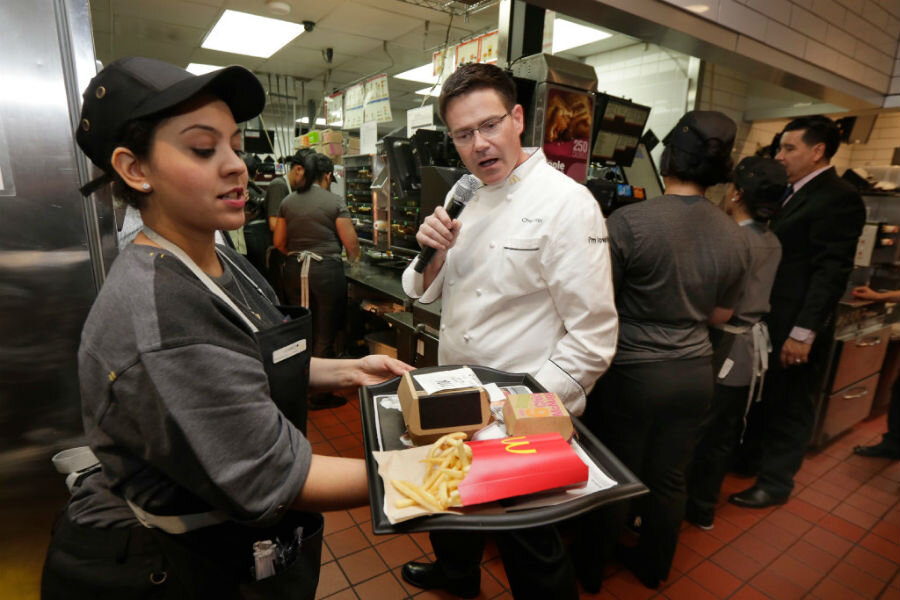In ongoing struggle to maintain relevance, McDonald’s begins delivery
Loading...
For McDonald’s, the struggle to stay relevant continues. The company’s latest answer: food delivery.
The fast food chain has partnered with UberEATS to offer delivery service in three Florida cities, Orlando, Tampa, and Miami, starting in late January. Customers will be able to order anything on the McDonald’s menu using the UberEATS website or app, and have it delivered to their home.
The move is the latest in a series of changes intended to adapt the McDonald’s brand to the current restaurant environment. Since chief executive officer Steve Easterbrook took over in 2015, McDonald’s has been experimenting with ways to attract more customers and increase revenue.
That’s no easy task: Millennials, who eat out more often than any other generation, are decidedly lukewarm toward the brand, often preferring gourmet burger chains. In fact, according to a McDonald’s franchisee memo obtained by The Wall Street Journal, just 1 in 5 Millennials has ever tried the company’s flagship Big Mac.
Last month, McDonald’s announced that it would offer mobile ordering starting in 2017. The approach has been a success for companies that have it, including Starbucks and Chik-fil-A, cutting customer wait times and improving the accuracy of orders. By 2018, the service is expected to be available at up to 25,000 restaurants worldwide.
Delivery service combines smartphone ordering with courier service. And there may be a gap in the market: though delivery service continues to grow, fast-food chains have been slow to adopt delivery. Taco Bell, which partnered with DoorDash to offer the service in 2015, was the first, according to Business Insider.
Partnering with UberEATS eliminates many of the logistical challenges for McDonald’s, and having the McDonald’s menu on Uber’s food-ordering app may encourage consumers to consider it.
UberEATS currently serves 50 cities worldwide. It uses the same tracking software as the company’s ride-share service, allowing customers to track the progress of their order in real time.
Depending on how its Florida customers respond, McDonald’s may expand its delivery service to other markets, said company spokeswoman Becca Hary, according to USA TODAY.
In 2015, McDonald’s introduced all-day breakfast, a move that – one year later – saw breakfast accounting for 25 percent of the chain’s revenue. The company has announced plans to focus more on food quality, including eliminating milk and chicken products that contain added hormones by 2018. Last month, McDonald’s added two twists on the Big Mac to its menu, a decision welcomed by some analysts, who say the company needs to focus on its core offerings. Also in November came the addition of table service, which aims to make McDonald’s feel more like a restaurant.








